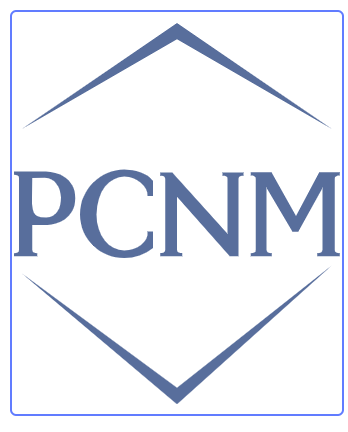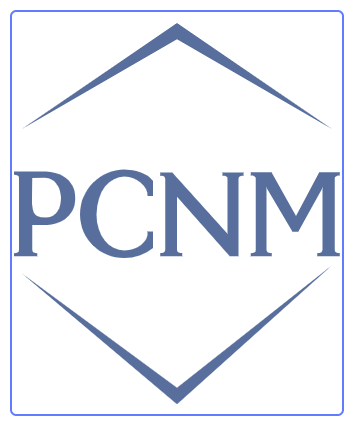
Preventive Care in Nursing and Midwifery Journal

Volume 15, Issue 2 (10-2025)
PCNM 2025, 15(2): 50-58 |
Back to browse issues page
Ethics code: IR.SHMU.REC.1398.025
Download citation:
BibTeX | RIS | EndNote | Medlars | ProCite | Reference Manager | RefWorks
Send citation to:



BibTeX | RIS | EndNote | Medlars | ProCite | Reference Manager | RefWorks
Send citation to:
ghaffari sardasht F, sadeghi M, Keramat A. Women’s satisfaction with preconception care and childbearing counseling services: a cross-sectional study. PCNM 2025; 15 (2) :50-58
URL: http://nmcjournal.zums.ac.ir/article-1-973-en.html
URL: http://nmcjournal.zums.ac.ir/article-1-973-en.html
Phd in Reproductive health, school of nursing and midwifery, medical sciences university of Neyshabur,Neyshabur,Iran , ghaffarisf3@mums.ac.ir
Abstract: (384 Views)
Background: Women’s satisfaction with fertility counseling and preconception care is a key indicator of the quality of reproductive health services.
Objectives: This study aimed to assess satisfaction levels and their determinants among women of reproductive age attending urban Comprehensive Health Service Centers in Shahroud, Iran.
Methods: A cross-sectional study was conducted from May to December 2022 involving 319 women selected through multistage sampling from all 10 urban health centers in Shahroud County. Data were collected immediately after preconception care visits using a validated 35-item questionnaire covering two domains: childbearing counseling (11 items, score range 11–55) and preconception care (24 items, score range 24–120). Scores were converted to percentages and categorized as low (<51%), moderate (51–75%), or high (>75%) satisfaction. Statistical analysis was performed using SPSS version 22.
Results: Mean satisfaction scores were 29.59 (8.34) for childbearing counseling (53.8%) and 56.59 (15.67) for preconception care (47.2%), indicating moderate to low satisfaction overall (total score: 86.18 (20.76), 49.2%). Highest satisfaction in counseling was for “husband’s presence during counseling” (36.1% strongly agreed), and lowest was for “education was sufficient and understandable” (0.6% strongly agreed). In preconception care, the highest disagreement was with “ease of locating the service site” (64.9%), and the lowest strong agreement was for “midwife’s behavior was polite” (1.3%). Key deficiencies included inadequate education, poor communication, unclear risk explanation, and structural barriers. Community health worker accessibility was noted as a relative strength.
Conclusion: Low satisfaction primarily stemmed from poor communication, insufficient education, and infrastructural challenges. Enhancing provider communication, educational quality, privacy, and multidisciplinary access is essential.
Objectives: This study aimed to assess satisfaction levels and their determinants among women of reproductive age attending urban Comprehensive Health Service Centers in Shahroud, Iran.
Methods: A cross-sectional study was conducted from May to December 2022 involving 319 women selected through multistage sampling from all 10 urban health centers in Shahroud County. Data were collected immediately after preconception care visits using a validated 35-item questionnaire covering two domains: childbearing counseling (11 items, score range 11–55) and preconception care (24 items, score range 24–120). Scores were converted to percentages and categorized as low (<51%), moderate (51–75%), or high (>75%) satisfaction. Statistical analysis was performed using SPSS version 22.
Results: Mean satisfaction scores were 29.59 (8.34) for childbearing counseling (53.8%) and 56.59 (15.67) for preconception care (47.2%), indicating moderate to low satisfaction overall (total score: 86.18 (20.76), 49.2%). Highest satisfaction in counseling was for “husband’s presence during counseling” (36.1% strongly agreed), and lowest was for “education was sufficient and understandable” (0.6% strongly agreed). In preconception care, the highest disagreement was with “ease of locating the service site” (64.9%), and the lowest strong agreement was for “midwife’s behavior was polite” (1.3%). Key deficiencies included inadequate education, poor communication, unclear risk explanation, and structural barriers. Community health worker accessibility was noted as a relative strength.
Conclusion: Low satisfaction primarily stemmed from poor communication, insufficient education, and infrastructural challenges. Enhancing provider communication, educational quality, privacy, and multidisciplinary access is essential.
Keywords: Preconception care, Childbearing counseling, Reproductive health services, Quality of health care
Type of Study: Orginal research |
Subject:
Midwifery
Received: 2025/07/12 | Accepted: 2025/10/2 | Published: 2025/10/2
Received: 2025/07/12 | Accepted: 2025/10/2 | Published: 2025/10/2
References
1. Leekuan P, Kane R, Sukwong P, Kulnitichai W. Understanding sexual and reproductive health from the perspective of late adolescents in Northern Thailand: a phenomenological study. Journal of Reproductive Health. 2022;19(1):230. [https://doi.org/10.1186/s12978-022-01528-1] [PMID]
2. Vice President of Health, Population Youth Center, Family Health and Schools. Integrated care for marriage, healthy fertility and childbearing: Childbearing education/consultation special service provider [Internet]. 2nd ed. Tehran: National Population Youth Administration; 2023 [cited 2025 May 9]. Available from: [https://siba.behdasht.gov.ir/]
3. Appleford G, RamaRao S, Bellows B. The inclusion of sexual and reproductive health services within universal health care through intentional design. Sexual and Reproductive Health Matters. 2020;28(2):1799589. [https://doi.org/10.1080/26410397.2020.1799589] [PMID]
4. Mousa abadi Z, Sadeghi M, Kahani K. Familiarity with "special fertility care" services for women with medical conditions. Behvarz Journal. 2021;32(108):44-45. [https://doi.org/10.22038/BEHV.2021.54530.1215]
5. Ranjbar F, Khalajabadi Farahani F, Montazeri M, Jahanfar S, Gharacheh M. Sexual and reproductive health-related questions and concerns of newly married couples: A qualitative content analysis. Journal of Health Science Reports. 2023;6(8):e1479. [https://doi.org/10.1002/hsr2.1479] [PMID]
6. Mohamadi E, Taheri M, Yazdanpanah M, Barakati SH, Salehi F, Akbari N, Khosravi A, Eini-Zinab H, Ghafoori F, Rahimi A, Mostafavi H. Identification of Indicators for Reproductive Health and Population Programs Monitoring in Iran. Journal of Midwifery and Reproductive Health. 2023;11(3). [https://doi.org/10.22038/jmrh.2022.67311.1970]
7. Johnson K, Posner SF, Biermann J, Cordero JF, Atrash HK, Parker CS, et al. Recommendations to improve preconception health and health care-United States: Report of the CDC/ATSDR preconception care work group and the select panel on preconception care. Morbidity and Mortality Weekly Report: Recommendations and Reports. 2006;55:1-23. [https://doi.org/10.15585/mmwr.rr5506a1]
8. Khadivzadeh T, Rahmanian SA, Esmaily H. Young Women and Men's Attitude towards Childbearing. Journal of Midwifery and Reproductive Health. 2018;6(3):1345-1356. [https://doi.org/10.22038/jmrh.2018.20033.1212]
9. American College of Obstetricians and Gynecologists, Committee on Gynecologic Practice. Prepregnancy counseling: committee opinion No. 762. Fertility and Sterility. 2019;111(1):32-42. [https://doi.org/10.1097/AOG.0000000000003013] [PMID]
10. Kikuchi K, Okawa S, Zamawe CO, Shibanuma A, Nanishi K, Iwamoto A, Saw YM, Jimba M. Effectiveness of continuum of care-linking pre-pregnancy care and pregnancy care to improve neonatal and perinatal mortality: a systematic review and meta-analysis. PLOS ONE. 2016;11(10):e0164965. [https://doi.org/10.1371/journal.pone.0164965] [PMID]
11. Dean SV, Imam AM, Lassi ZS, Bhutta ZA. Systematic review of preconception risks and interventions. Karachi: Division of Women and Child Health, Aga Khan University; 2014. [https://globalmotherchildresearch.tghn.org/site_media/media/articles/Preconception_Report.pdf]
12. Black MM, Behrman JR, Daelmans B, Prado EL, Richter L, Tomlinson M, Trude AC, Wertlieb D, Wuermli AJ, Yoshikawa H. The principles of Nurturing Care promote human capital and mitigate adversities from preconception through adolescence. BMJ Global Health. 2021;6(4):e004436. [https://doi.org/10.1136/bmjgh-2020-004436] [PMID]
13. Gavin L, Moskosky S, Carter M, Curtis K, Glass E, Godfrey E, Marcell A, Mautone-Smith N, Pazol K, Tepper N, Zapata L. Providing quality family planning services: recommendations of CDC and the US Office of Population Affairs. Morbidity and Mortality Weekly Report: Recommendations and Reports. 2014;63(4):1-54. [https://doi.org/10.15585/mmwr.rr6304a1]
14. Dean SV, Lassi ZS, Imam AM, Bhutta ZA. Preconception care: promoting reproductive planning. Reproductive Health. 2014;11(3):1-7. [https://doi.org/10.1186/1742-4755-11-S3-S2] [PMID]
15. Rahmati R, Khadivzadeh T, Esmaily H, Bahrami HR. Knowledge and Attitude of Staff Working in Healthcare Centers Regarding Childbearing. Journal of Midwifery and Reproductive Health. 2019;7(1):1576-1583. [https://doi.org/10.22038/jmrh.2018.15457.1167]
16. Burgess CK, Henning PA, Norman WV, Manze MG, Jones HE. A systematic review of the effect of reproductive intention screening in primary care settings on reproductive health outcomes. Journal of Family Practice. 2018;35(2):122-31. [https://doi.org/10.1093/fampra/cmx086] [PMID]
17. Ghaffari F, Jahani Shourab N, Jafarnejad F, Esmaily H. Application of Donabedian quality-of-care framework to assess the outcomes of preconception care in urban health centers, Mashhad, Iran in 2012. Journal of Midwifery and Reproductive Health. 2014;2(1):50-9. [https://doi.org/10.22038/jmrh.2013.1924]
18. Simbar M, Nahidi F, Akbarzadeh A. Assessment of quality of prenatal care in Shahid Beheshti University of Medical Sciences health centers. Payesh (Health Monitor). 2012;11(4):529-44. [https://doi.org/10.1108/09526861211210394] [PMID]
19. Defar A, Getachew T, Taye G, Tadele T, Getnet M, Shumet T, Molla G, Gonfa G, Teklie H, Tadesse A, Bekele A. Quality antenatal care services delivery at health facilities of Ethiopia, assessment of the structure/input of care setting. BMC Health Services Research. 2020;20(1):1-9. [https://doi.org/10.1186/s12913-020-05372-6] [PMID]
20. Oladapo OT, Osiberu MO. Do sociodemographic characteristics of pregnant women determine their perception of antenatal care quality? Maternal and Child Health Journal. 2009;13(4):505-11. [https://doi.org/10.1007/s10995-008-0389-2] [PMID]
21. Hesami Arani M, Bagheri A, Roshan Ghias F, Raeiat Mohtashemi A, Esmaeili M, Atesam A. Satisfaction assessment of clients' health centers of Aran and Bidgol city in 2016. Rahavard Salamat. 2019;4(2):1-12. [http://rsj.iums.ac.ir/article-1-130-en.html]
22. Ministry of Health and Medical Education (MOHME), Center for Population Youthfulness and Family Health. Childbearing Counseling Content for Service Providers. Tehran: MOHME; 2022. [https://siba.behdasht.gov.ir/]
23. Ghamarpour F, Mahmoodi M, Masoudi Asl E. The effect of health development plan on mother's satisfaction of waiting time and continues of receiving of maternal health services in clients of community health centers of Iran University of Medical Sciences. Beyhagh. 2018;23(2):21-33. [https://beyhagh.medsab.ac.ir/article_1145.html?lang=en]
24. Delavari A, Vosoogh-Moghaddam A, Kazemi Esfa Z, Seyed-Aghamiri ZB. Comparison of the level of satisfaction of service recipients between government and outsourced health posts under coverage of South Tehran Health Center. Journal of School of Public Health and Institute of Public Health Research. 2022;20(1):1-12. [http://sjsph.tums.ac.ir/article-1-6105-en.html]
25. Mahmoudiani S, Dehghani M. Studying the Relationship between Fertility Knowledge and Childbearing among Women Attending the Health Centers in Zarrin Shahr City, Iran. Journal of Health System Research. 2024;20(2):106-13. [https://doi.org/10.48305/jhsr.v20i2.1535]
Send email to the article author
| Rights and permissions | |
 |
This work is licensed under a Creative Commons Attribution-NonCommercial 4.0 International License. |




